Sourdough Bread Shelf Life: Understanding Freshness and Storage Tips 🍞✨
1. Introduction
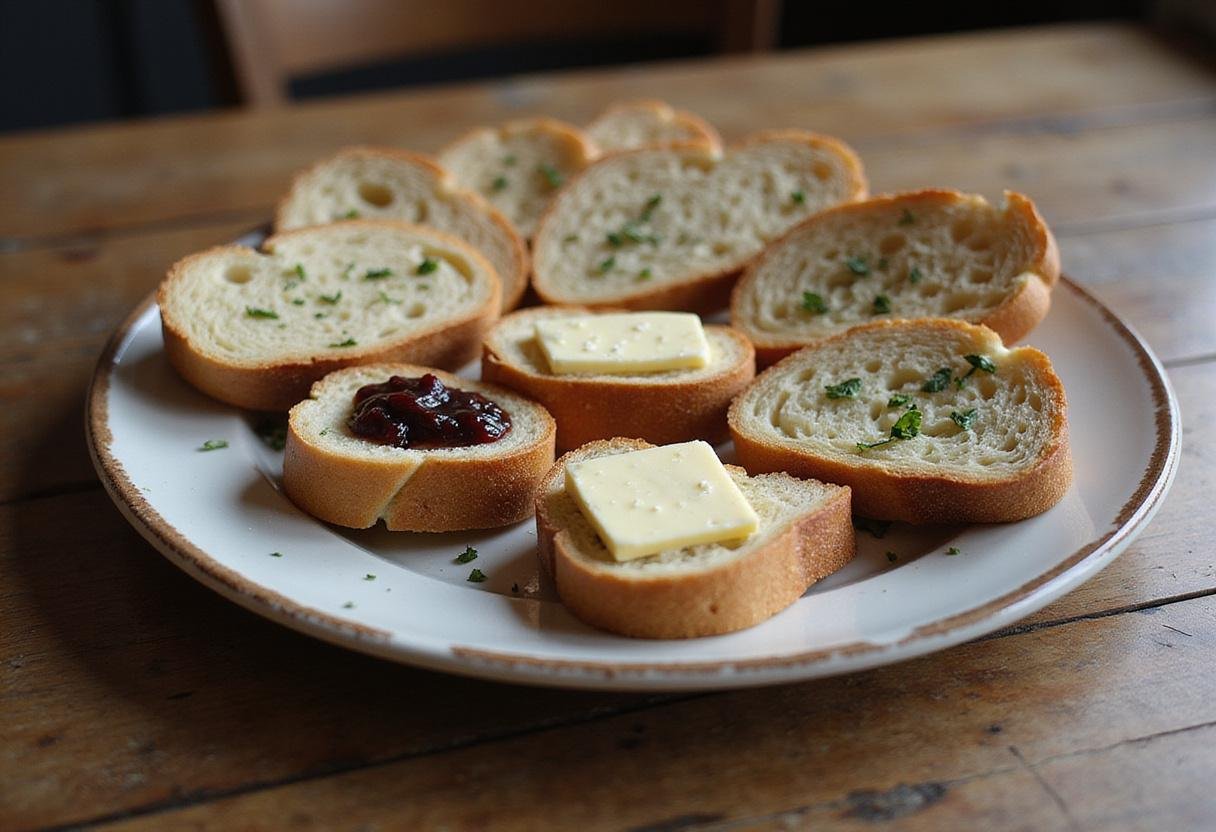
Sourdough bread is renowned for its unique tangy flavor, chewy texture, and rustic charm. Many home bakers, however, frequently wonder: how long does sourdough bread last? Understanding the shelf life of sourdough bread is essential for truly enjoying its full potential, from those initial freshly baked delights to learning the best storage tips that keep it delicious for longer. This knowledge not only prevents waste but also ensures you get the most enjoyment out of every loaf. In this comprehensive article, we’ll explore the multitude of factors affecting the longevity of this beloved bread. We’ll provide you with clear, step-by-step instructions for creating your own magnificent sourdough masterpiece at home. We’ll also share essential information on how to store it correctly for optimal freshness. Are you in the mood for something sweet to spread on your sourdough? Consider our light butter spread recipe!
2. What Affects The Shelf Life of Sourdough Bread?
Several key factors influence how long sourdough bread lasts. The specific ingredients used, the bread’s inherent moisture content, and, crucially, the storage conditions all play significant roles in determining its freshness window. Generally speaking, homemade sourdough tends to have a somewhat shorter shelf life compared to commercially produced varieties due to the typical absence of artificial preservatives in home baking. Understanding each of these components thoroughly will ultimately help you make the best, most informed choices for enjoying your sourdough bread at its peak. The techniques used really matter when considering how long does sourdough bread last.
3. Ingredients You Will Need
To begin your sourdough journey, gather these essential ingredients:
- 500g all-purpose flour (or bread flour for a chewier texture)
- 350ml water (room temperature is ideal for activating the starter)
- 100g active sourdough starter (a bubbly, lively starter is key!)
- 10g salt (enhances the flavor and controls the fermentation)
4. Step-by-Step Instructions
Step 1: Prepare the Dough
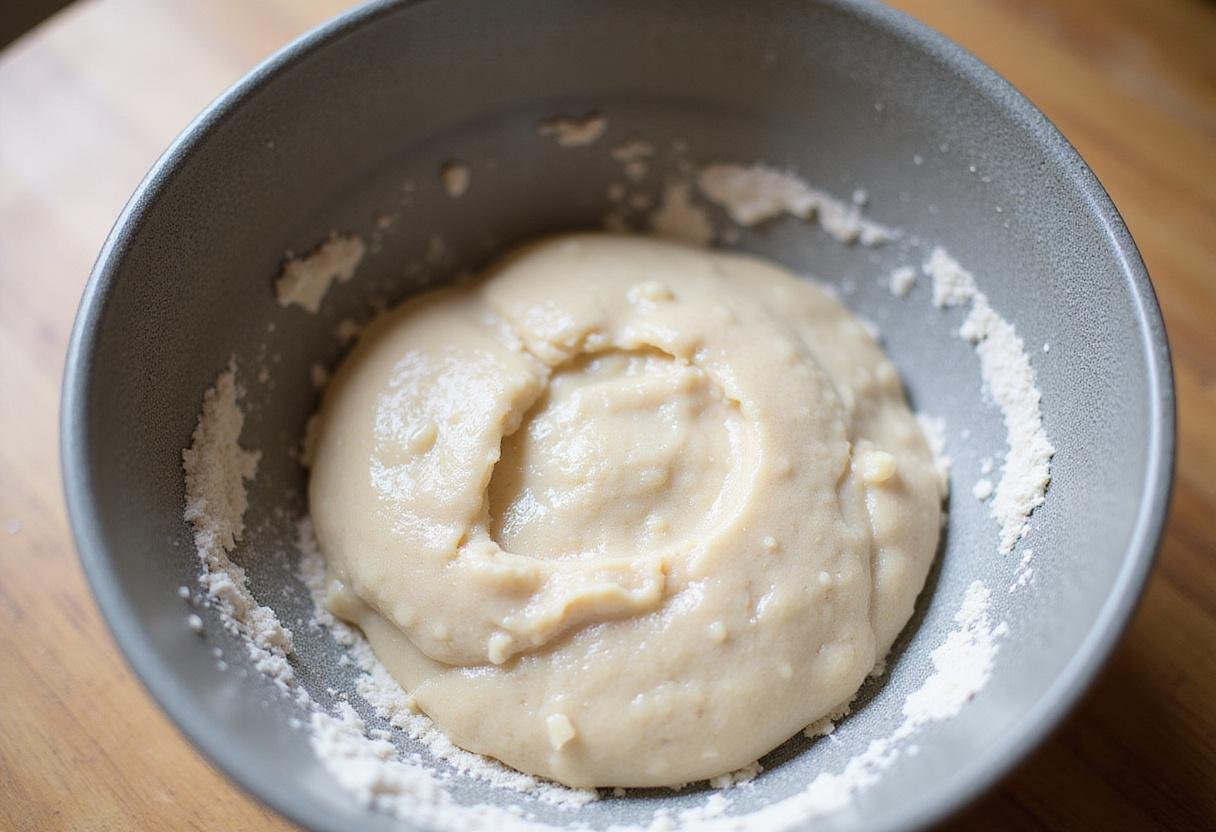
To begin, in a large bowl, gently mix 100g of your active sourdough starter with 350ml of water. Ensure the water isn’t too hot or cold, as this can affect the starter’s activity. Gradually add 500g of all-purpose flour, stirring continuously until all of the flour is fully hydrated with no dry clumps remaining. This crucial mixing process initiates the first fermentation stage, significantly impacting how long sourdough bread lasts by establishing a healthy and robust dough environment. Think about varying your bread and serve with other recipes!
Step 2: Knead the Dough
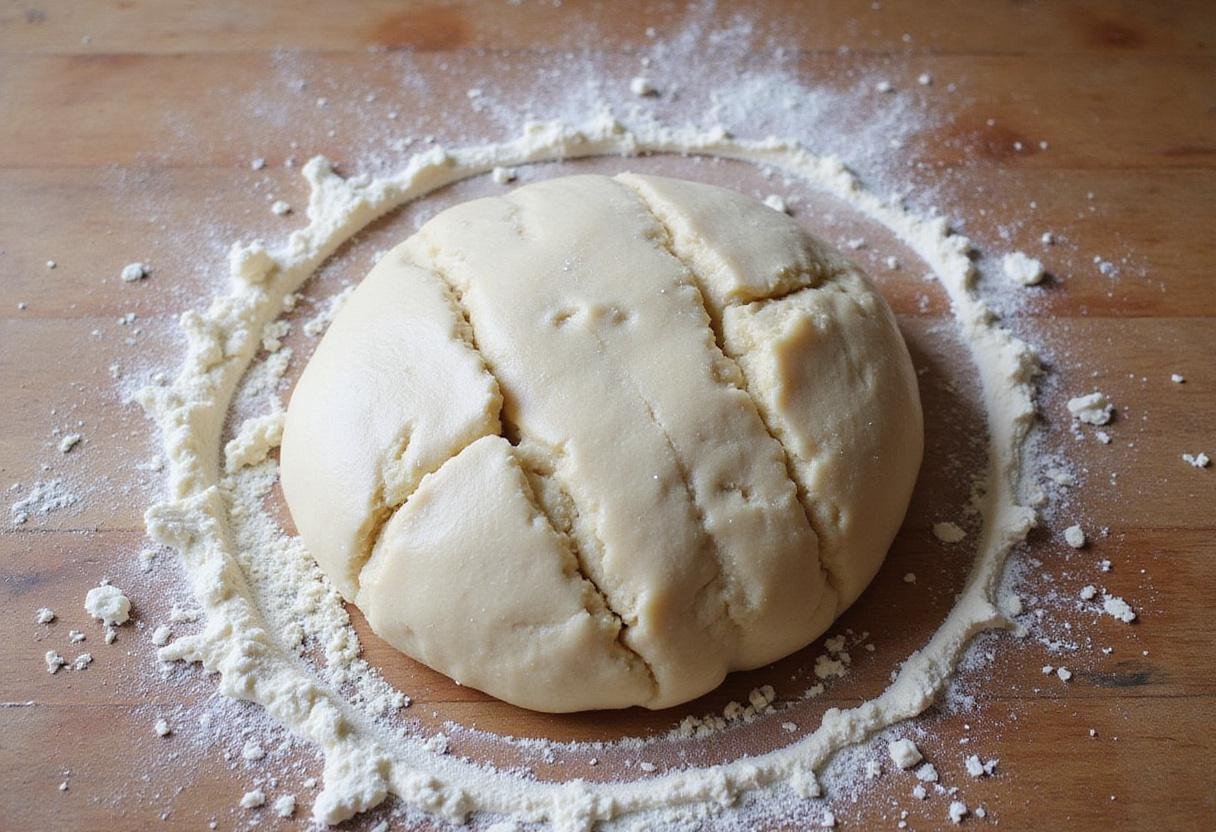
Turn the dough out onto a lightly floured surface and knead it diligently for approximately 10 minutes. This step is absolutely essential as it develops the gluten strands within the dough, which in turn, contributes significantly to the overall structure, texture, and delightful chewiness of the finished loaf. Proper kneading also actively aids in the fermentation process, further influencing the ultimate answer to our central question of how long does sourdough bread last. Looking for a tasty lunch option to pair with your bread? Check out our recipe for Bellacinos Grinder Pizza!
Step 3: First Rise
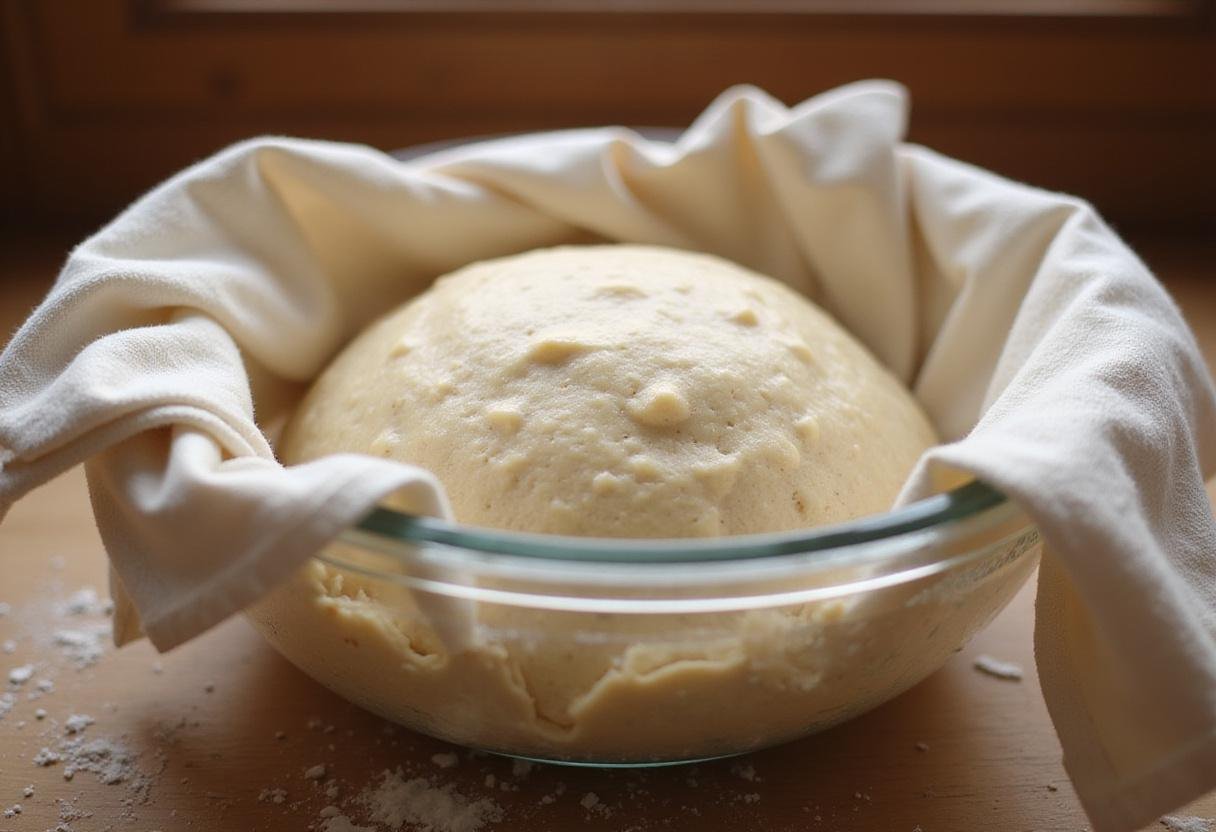
Gently place the thoroughly kneaded dough into a lightly greased bowl, ensuring that all sides of the dough are lightly coated to prevent sticking. Cover the bowl securely with a clean, damp cloth or plastic wrap. Let the dough rise for approximately 4-6 hours at a consistent room temperature until it has visibly doubled in size. This crucial step significantly contributes to the natural fermentation process, profoundly affecting both the bread’s characteristic flavor profile and helping to definitively determine how long sourdough bread lasts once it has been baked to perfection. This is a great time to add other ingredients based on our external source.
Step 4: Bake the Bread
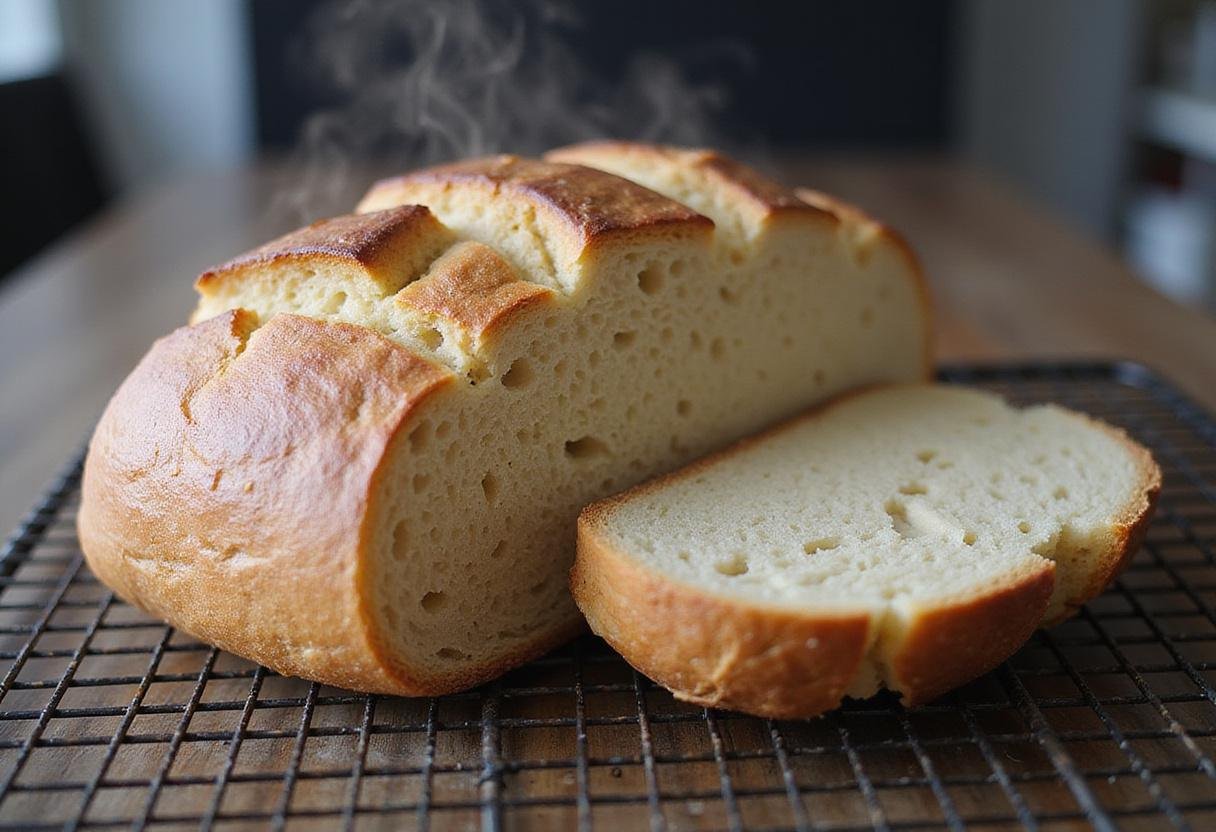
Preheat your oven to a precise 450°F (230°C). If you have one, place a Dutch oven inside to preheat as well – this helps create a steamy environment for a perfect crust. Carefully shape the risen dough into your desired form (round or oblong) and gently place it into the preheated Dutch oven. Bake, covered, for 20 minutes, then remove the lid and bake for another 10-15 minutes, until the crust achieves a deep golden-brown hue. Allow the freshly baked bread to cool completely on a wire rack before even attempting to slice into it. Proper cooling is absolutely essential for extending the overall freshness and, vitally, determining how long sourdough bread lasts when stored correctly. You can pair your sourdough bread with a delicious Peach Wine Cooler!
5. Best Storage Practices
To absolutely maximize how long does sourdough bread last, implementing proper storage techniques is undeniably key. For short-term storage, aim to store your cooled bread in a breathable paper bag at room temperature for a maximum of up to three days. Avoid plastic bags for room temperature storage, as they can trap moisture and lead to premature mold growth. For longer-term storage solutions, strongly consider wrapping the loaf tightly (and we mean tightly!) in either plastic wrap or aluminum foil, then placing it carefully into the freezer. This can effectively extend its usable shelf life to several months without compromising too much on quality. Just make sure to fully reheat the bread before serving to revive its wonderful texture and flavor. Don’t forget to explore more recipes on our lunch page!
6. FAQs About Sourdough Bread Shelf Life
Here are some frequently asked questions to help you better understand sourdough bread’s shelf life:
- How long does sourdough bread last at room temperature? Typically, when stored correctly (in a paper bag), sourdough bread will maintain its quality for about 3 days at room temperature.
- Can I freeze sourdough bread? Yes, absolutely! Freezing sourdough bread is an excellent and highly effective method to significantly extend its shelf life, allowing it to last for several months.
- What’s the best way to defrost sourdough bread? For the absolute best results in terms of texture and flavor, allow the frozen bread to thaw completely at room temperature for several hours. Alternatively, you can warm it directly in a preheated oven at a low temperature (around 300°F or 150°C) for about 15-20 minutes to rejuvenate its crust and interior.
7. Conclusion
Gaining a solid understanding of the various factors that influence the shelf life of sourdough bread is undeniably essential for enjoying it at its absolute finest. By consistently following proper baking and, especially, storage techniques, you can confidently ensure that your delicious homemade sourdough bread lasts longer while retaining its peak freshness and flavor. Whether enjoyed still warm straight from the oven or savored a few days later, knowing precisely how long does sourdough bread last can not only minimize waste but also significantly enhance your overall baking journey and elevate your everyday meals. Thinking of a light dessert? What about our light frozen yogurt calories recipe!
8. Enjoy Your Sourdough Bread!
Now that you’re armed with the knowledge of how to bake and properly store sourdough bread, it’s time to unleash your culinary creativity! Enjoy it simply with your favorite butter or spreads, use it as a delightful accompaniment to hearty soups and stews, or savor each beautifully toasted slice topped with your preferred ingredients. Whatever your personal preference, the true reward lies in sharing and enjoying your freshly baked sourdough creation with family and friends! Sourdough bread can be paired with our dinner options!
9. Explore More Recipes
Ready to continue your culinary adventures and discover even more delectable recipes? Stay tuned to our blog for a constant stream of additional invaluable tips and tricks on both sourdough baking and a wide array of other exciting culinary endeavors! You can view our recipes also on our snack and breakfast page. If you love cheesecake, then you will love our decadent dippable cheesecake indulgence!
Print
Sourdough Bread Shelf Life
Learn about the shelf life of sourdough bread, including key storage tips to keep your homemade bread fresh and delicious.
- Total Time: 5-6 hours (including rise time)
- Yield: 1 loaf
Ingredients
- 500g all-purpose flour
- 350ml water (room temperature)
- 100g active sourdough starter
- 10g salt
Instructions
- Mix 100g of active sourdough starter with 350ml of water in a large bowl. Gradually add 500g of all-purpose flour and stir until fully hydrated.
- Knead the dough on a lightly floured surface for about 10 minutes to develop gluten.
- Place the kneaded dough in a greased bowl, cover with a damp cloth, and let it rise for about 4-6 hours until doubled in size.
- Preheat the oven to 450°F (230°C). Shape the risen dough and bake in a preheated dutch oven for 30-35 minutes until golden brown.
- Allow the bread to cool completely before slicing to maximize freshness.
Notes
- Store sourdough bread in a paper bag at room temperature for up to three days.
- For longer storage, wrap the bread tightly in plastic wrap or aluminum foil and freeze it.
- Reheat frozen bread in the oven for the best texture.
- Prep Time: 20 minutes
- Cook Time: 35 minutes
- Category: Bread
- Method: Baking
- Cuisine: Italian
- Diet: Vegetarian
Nutrition
- Serving Size: 1 slice
- Calories: 120 Kcal
- Sugar: 0g
- Sodium: 200mg
- Fat: 1g
- Saturated Fat: 0g
- Unsaturated Fat: 0g
- Trans Fat: 0g
- Carbohydrates: 25g
- Fiber: 1g
- Protein: 4g
- Cholesterol: 0mg

